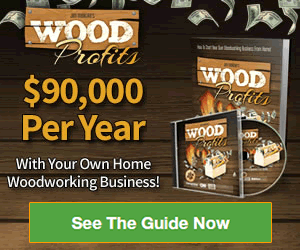TitanoboaTitanoboa Cerrejonensis |

Custom Search
|
This was a period of 10 million years immediately following the dinosaur extinction event. With the mass extinction event that marked the end of the Mesozoic Era, those animals that remained, quickly diversified and took up majority of the ecosystem niches left vacant by the death of the dinosaurs.
In 2009, the fossils of 28 individual Titanoboa cerrejonensis were found in Colombia, in the Cerrejón Formation in the coal mines of Cerrejón in La Guajira. There the scientists also found fossilized leaves and plants and some giant reptiles like giant turtles, and the biggest crocodiles in the history of fossil records. Some scientists think that Titanoboa was the find of the decade and that it's one of the most important since the Tyrannosaurus rex findings in 1902. It is the only known species in the genus and is the biggest, longest, and heaviest snake ever discovered, as it supplanted the Gigantophis the previous record holder at 33 ft. It weighed more than a 1000 kg and measured 14 m or approximately 50 feet in length. Their girth measured more than 3 ft (1 m) at the thickest part of the body, the center. The gigantic snake could swallow a crocodile, but amazingly just a few years ago, scientists didn't have a clue that it ever existed. With its giant size, the Titanoboa is very much like the snakes featured in the Hollywood horror snake movies, it's a good thing it is extinct. Without the competition of the dinosaurs, this snake was the largest predator on the planet Earth for about 10 million years. Thought to be the ancestor of the boa constrictor and anacondas, the Titanoboa wasn't a venomous snake, but instead a very large constrictor snake. Like most modern snake species, they were expert ambush predators, capable of striking at an incredible speed at unsuspecting prey. It was capable of crushing its unfortunate prey with the constricting force of 400 lbs per square inch. With its massive size, the Titanoboa probably spent most of its time in the water, much like the green anacondas found nowadays in the amazon forest. However, the discovery of the Titanoboa fossils satisfies not only our curiosity and fascination to know more about the animals that once inhabited our world. The fossil records also give us clues, among other things about climate changes that occurred on our planet throughout the ages.
For example, it's possible that the Titanoboa and other reptiles grew larger about 60 million years ago due to a much warmer climate. This contrasts with the gigantism found in dinosaurs and other animals too, which is more likely due to the oxygen increase in the atmosphere. Because snakes are ectothermic animals, they are unable to regulate their temperature and depend on external heat to survive. Its discovery implies that the tropics, the Titanoboa habitat, must have been in the past, much warmer than previously believed. The Earth's warmer climate during the Paleocene epoch allowed these cold-blooded snakes to reach much larger sizes than that of modern snakes. With the warmer climate and the absence of giant predators like the Theropod dinosaurs, snakes had the ability to exploit this opportunity and truly large species like the Titanoboa started to evolve. Today the largest ectothermic species are found in the tropics, where the climate is warmer, and the smallest are found farther away from the equator region. However, not all scientists agree with this theory. But climate change probably also played an important role in the extinction of the Titanoboa. The theory is that declining global temperatures imposed smaller sizes for reptiles and the emergence of smaller types of snakes to take its place.
Habitat change is another possibility to explain the extinction of the Titanoboa. However, it's possible that its temporal and geographic ranges were larger than what we know now, but this must be confirmed by other fossil discoveries. A life-sized Titanoboa replica was on display at the Smithsonian Natural History Museum in Washington and began a nationwide tour in 2013. It still amazes me that something as massive as the gigantic Titanoboa wasn't found earlier by scientists. It took science, more than a century to displace Gigantophis from the spotlight as the biggest snake that ever lived on Earth. But who knows what still lies beneath the ground, maybe scientists find fossils of even bigger snakes that roamed the planet millions of years ago.
|
Did You Know?
The mozambique spitting cobra is capable of spitting it's venom to a distance of 2 or 3 meters using it's specially modified fangs. Temporal range |
© 2014 Snake Facts About Us | Privacy Policy | Contact









